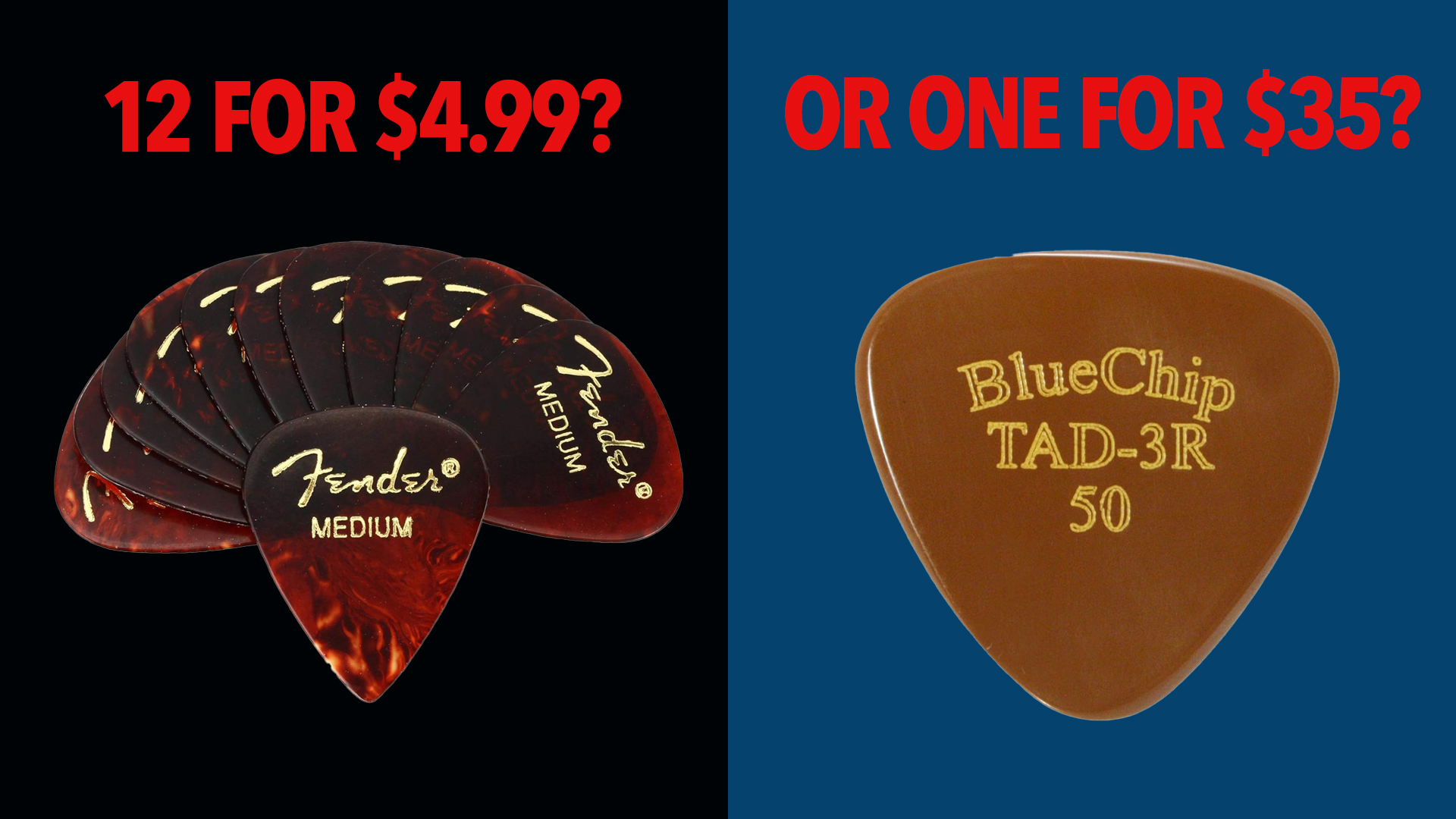"For most guitarists, the idea of spending this kind of money on a pick is pretty bonkers.” How a $35 guitar pick made fans out of John Mayer and Billy Strings
Made of aerospace-grade material, the plectrum is winning over big names as it upends the market

Not many guitar players put aside a sizable budget for guitar picks, but the $35 BlueChip pick, now considered “the gold standard of high-end picks,” saved its creators from financial ruin and has been reshaping the industry ever since. It's convincing some player to reassess their budgets.
John Mayer swears by them — although he admits he “cannot endorse them because they’re too expensive.” Billy Strings is a fan too, and actor and musician Steve Martin won’t play anything other than its thumpicks since “losing my virginity” to them.
But less than two decades ago they were met with derision.
Speaking to the Wall Street Journal about BlueChip’s unexpected rise to fame, Fretboard Journal founder Jason Verlinde admits they aren’t ordinary picks. Just two years into development, they began to up-end the premium guitar pick market.
“For most players,” he says, “a 25-cent plastic pick will totally suffice.” But in the “upper echelons of guitar minutiae,” they hold dominion. So what are they, and why are more and more players accepting that the substantial price hike is worth surrendering to?
The picks, made from a high-tech and highly-priced material traditionally used in aerospace, were born during the 2008 financial crisis. Matthew Goins, the owner of a Knoxville, Tennessee machine shop, was facing a bleak outlook in the wake of the crash, and had to find ways to make ends meet for his staff and his family.
“In '08, the economy went down pretty bad and we were suffering in the machine shop,” he says. “I was trying to make payroll any way I could. Selling around 20 picks a week helped us survive.”
All the latest guitar news, interviews, lessons, reviews, deals and more, direct to your inbox!
Now, the company holds its trade secrets very close to its chest, but it tells WSJ the concept for the picks came after cutting the aerospace-approved material for a client in the early 2000s. Goins and his brother, Allen realized that the “high heat-resistant and wear resistant” material might just usher in a new era for the humble plectrum.
For years, tortoiseshell picks — quite literally made from the shell of a hawksbill turtle — were the go-to for manufacturers and players. That, however, saw the turtle’s numbers dwindle. In 1982 it was recognized as an endangered species, thus amplifying the need to find a sustainable alternative.
BlueChip devotees believe the Goins brothers have done just that
Production was slow at first, and very expensive. As explained in the WSJ video, a 10-by-10-inch slice of this material, measuring around 0.75 of an inch thick, costs more than $5,000.
Since starting out, the company has found ways to improve production to reduce waste and increase productivity. Today, the company makes a variety of picks, including flat picks, thumb and finger picks and the IBJ55, which is a little larger than a standard jazz pick and comes with six pre-drilled holes in the center for enhanced grip.
A post shared by Matthew Goins (@bluechippicks)
A photo posted by on
“When we started the pick business, we had no idea what it would turn into,” Goins continues, pointing towards what Steve Martin once told Rolling Stone: “I haven't used any other picks since my virginity was lost to Bluechip”
Then came the aftermath. Like so many modern attempts to create copies of the famous Klon for the overdrive pedal market, competitors began swooping in, eager for a taste of its mystery material and viable heir to tortoishell's vacant throne.
In addition, BlueChip's rise has led other companies to raise prices for their own specially designed picks, leading to inflated prices for boutique plectrums. BlueChip says its picks are priced in accordance with the material and production costs, but adds the price tag could be impacted by inflation.
When you compare this to the world of violins where a typical player wouldn't scoff at spending thousands of dollars on a bow, it's kind of a bargain."
Jason Verlinde
“We're still designing and engineering things to make it less labor-intensive and keep the price at $35,” says Goins. “I don't know how long we can do that, but I'm trying very hard to stay there for our customers.”
Granted, though the backing of Mayer and company is a huge badge of honor for BlueChip, the price is still proving to be a sticking point for many.
“When you compare this to the world of violins where a typical player wouldn't scoff at spending thousands of dollars on a bow, it's kind of a bargain,” Verlinde laughs. “But for most guitarists, the idea of spending $35 on a pick is pretty bonkers.”
Head to BlueChip Picks to learn more.
A freelance writer with a penchant for music that gets weird, Phil is a regular contributor to Prog, Guitar World, and Total Guitar magazines and is especially keen on shining a light on unknown artists. Outside of the journalism realm, you can find him writing angular riffs in progressive metal band, Prognosis, in which he slings an 8-string Strandberg Boden Original, churning that low string through a variety of tunings. He's also a published author and is currently penning his debut novel which chucks fantasy, mythology and humanity into a great big melting pot.



